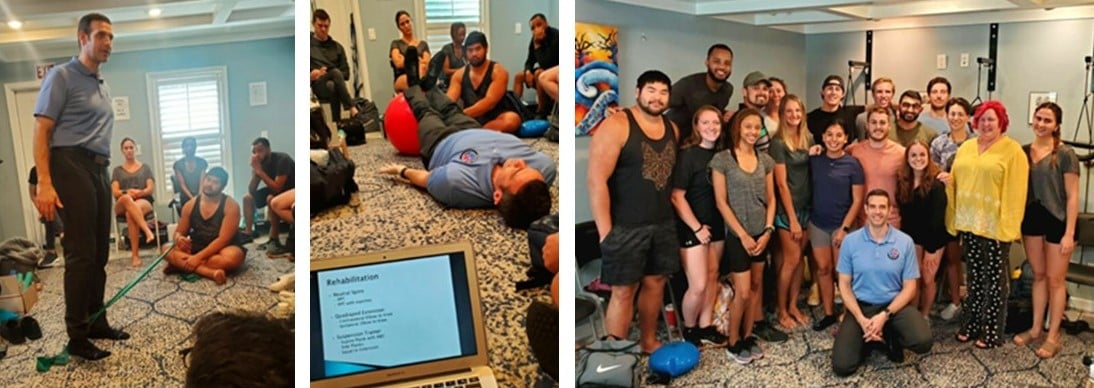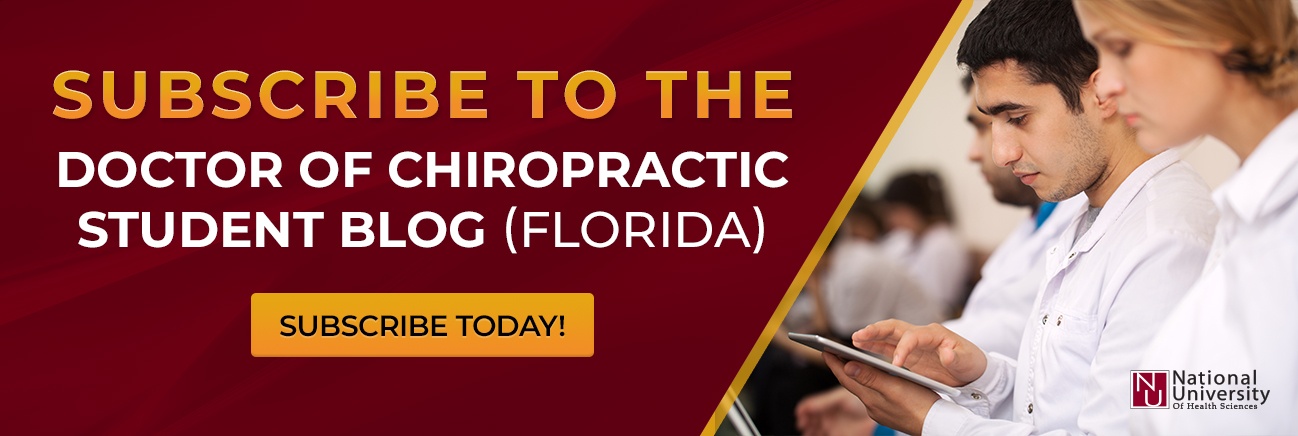This past weekend, numerous NUHS DC students and I attended a functional soft tissue course taught by Gregory Doerr (DC, CCSP, SFMA). It was an intense seminar that combined evaluation, soft tissue treatment, and rehabilitation techniques. Soft tissue treatment included FAKTR (functional and kinetic treatment with rehab) concepts, while rehabilitation entailed using Theraband (bands, balls, stability pads) and TRX suspension trainers. Through movement analysis, we learned how to evaluate for improper afferent and efferent communication, joint restriction, and tight myofascial structures.

Left and Center: Dr. Doerr showed us different rehabilitation techniques; Right: NUHS students proud to have completed the seminar in Functional Soft Tissue featuring FAKTR with Dr. Doerr.
To understand a patient’s baseline, it’s important to test movements before treatment. Then one can treat soft tissue in that painful position (with or without motion, resistance, or proprioception) for up to 2 minutes. Re-test that provocative position to see any potential improvement. Then training to restore muscle balance and movement patterns can be added into the treatment plan. To describe this simply, Dr. Doerr asked us to stand up and reach down to touch our toes. Many of us, including myself, could not touch our toes. We then spent a few minutes doing neurosensory soft tissue strokes on each other’s lower backs with FAKTR tools. Again, he asked us to reach for our toes. Suddenly, my fingers could touch the floor!
When using FAKTR tools for soft tissue work, we learned about the different treatment stroke styles. For example, when conducting neurosensory treatment (as in the example above), lighter and faster strokes are intended to reset the tone of the tissue. However, when dealing with tendinopathies, ligament injuries, post-surgical and traumatic scars, a structural treatment is needed to initiate fibroblast proliferation and stimulate collagen synthesis. Heaver, deeper strokes are used to create inflammation, and the treatment time occurs in short bursts with essential patient communication to determine the proper amount of discomfort. Last, microvascular treatment is designed to be anti-inflammatory with extremely light strokes to improve superficial blood perfusion and reduce edema, bruising, and bursitis.
FAKTR entails five main concepts:
- Positions of provocation
- Motions of provocation
- Resistance
- Functional positions/activities
- Adding proprioception
Throughout the course, we learned how to use these main concepts with specific tendinopathies, fascial syndromes, entrapment syndromes, ligament pain, scar adhesions, etc. Dr. Doerr was very knowledgeable and had an enthusiastic charisma that kept us all focused on his topics. I tried to absorb everything he said and showed us…I am relieved he provided physical notes as it was an immense amount of content that I’ll definitely need to review. He described common cases seen in his practice and treatment methods, gave us tips on how to be successful in our field, and encouraged us to keep in touch with him for future questions and comments. I thoroughly enjoyed taking his course and look forward to utilizing his techniques in my future practice!





0 Comments